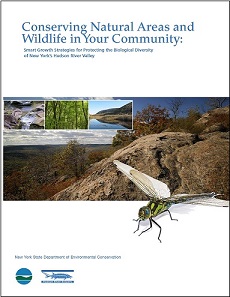Municipal Role
"There is a substantial disconnect between the scale at which we need to plan and manage to effectively conserve biodiversity and the scale at which land use planning and decision-making is traditionally done." Nature-Friendly Ordinances (McElfish 2004)
Ecosystems are not confined by political or property boundaries. However, the estuary watershed is divided into more than 250 towns, cities, and villages, and each community makes individual decisions that can significantly impact lands and waters throughout the watershed. In addition, there are countless landowners with varying interests in conservation stewardship. The expression "death by 1,000 cuts" is often used to describe how individual land-use decisions can cumulatively degrade the larger ecosystem. While State and Federal programs provide some protections to regulated natural resources, many remain vulnerable and opportunities for land acquisition are limited.
With thoughtful, pro-active planning, local governments can plan a key role in advancing regional conservation priorities while also supporting community values.
Conserving Natural Areas and Wildlife in Your Community
There are many approaches that communities can pursue to realize their conservation goals. Conserving Natural Areas and Wildlife in Your Community: Smart Growth Strategies for Protecting the Biological Diversity of New York's Hudson River Valley (Strong 2008) was designed for local governments that want to use their home-rule authority to conserve the Hudson Valley’s natural heritage. The handbook encourages municipalities to develop strategies for protecting nature, by indicating sources of information about natural areas and wildlife, outlining the smart growth strategies that can be used to conserve natural assets, and giving examples of how some Hudson Valley municipalities are conserving their resources.


